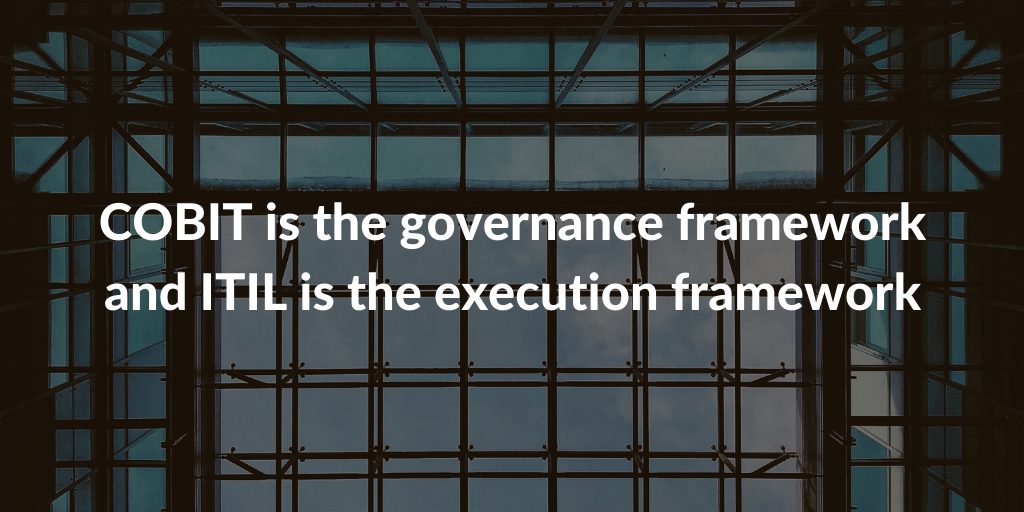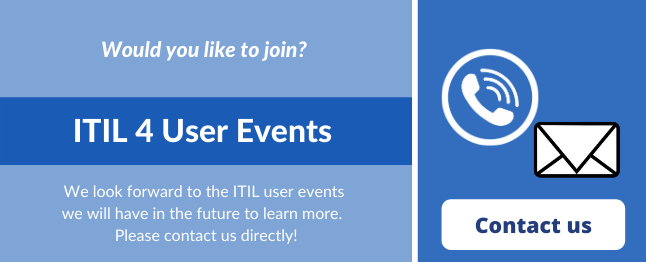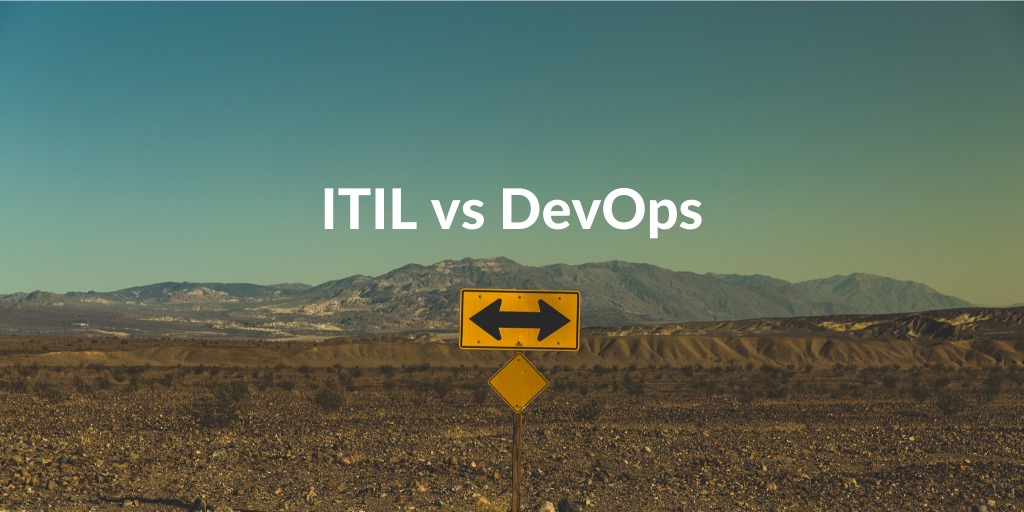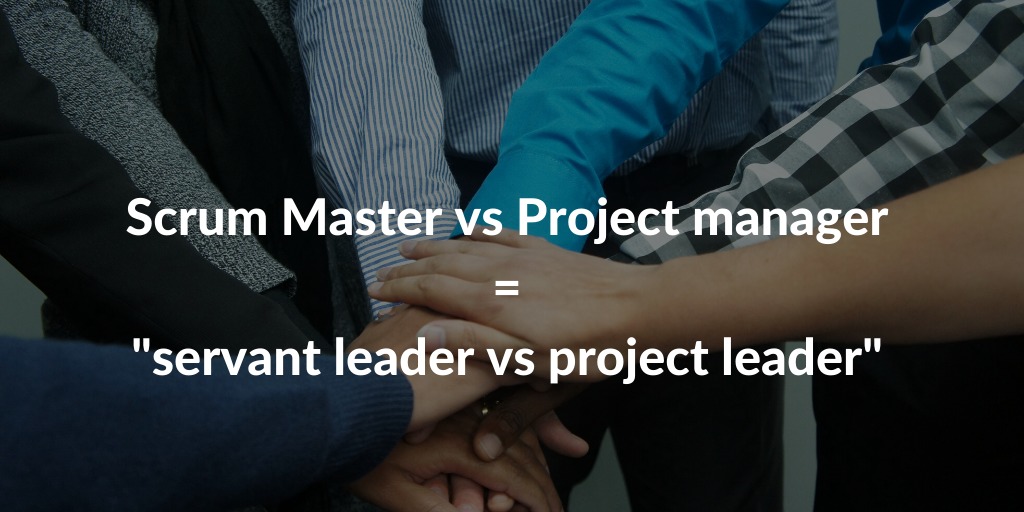News
View the latest inspiring and positive news and information about what's going on in the PM and IT world.

Date: 08/07/2020
A Team Leader is a specific term used in the AgilePM methodology while a Team Manager is a term used in the PRINCE2 methodology. Both organize the production in a constantly changing context while ensuring the team cohesion.
They provide direction, instruction and advice to a group of people, also known as a team, in order to achieve a certain goal. An effective Team leader/manager will know the strengths, weaknesses and motivations of all of his/her team members.

Read more
Team Manager Role in a PRINCE2 Project
Team Manager is the person responsible for production. This within the limits that are set by the project board, regarding quality, timescale and costs. The Team Manager is allocated by the Project Manager and this is defined in the work package. The Team Manager role reports to and takes direction from, the Project Manager. If a Team Manager is not assigned, the Project Manager will undertake the responsibilities of the Team Manager role.Team Leader Role in an AgilePM Project
Team Leader ideally acts as the servant-leader for the Solution Development Team. It ensures that the team functions as a whole and meets its objectives. Team Leader works with the team to plan and coordinate all aspects of product delivery at a detailed level. This is a leadership role rather than a management role. The person holding it will ideally be elected by his or her peers as the best person to lead them through a particular stage of the project. It is therefore likely that the Team Leader will also perform another development team role, in addition to their team leadership responsibilities.Team Leader and the Team Manager Responsibilities
Team Leader and the Team Manager Competences
The Team Leader Manager must have:- significant managerial / leadership and organizational skills
- a developed sense of teamwork
- great technical knowledge to be able to understand all tasks carried out by his team
- time management and problem-solving skills
- great knowledge of the software used in the project


Date: 02/07/2020
Are you looking for an IT framework but you don’t know whether ITIL or COBIT would be the best fit for your organisational needs?
Read on while we will try to help you by comparing the two most famous ITSM frameworks. Before we do so, we like to make sure that you are aware of the differences between IT governance and IT service management.
 Source: ITIL® 4 and COBIT® Axelos white paper written by Vishal Vyas
COBIT® is a registered trademark of ISACA® in the United States and other countries.
ITIL® is a registered trademark of AXELOS Limited, used under permission of AXELOS Limited.
All rights reserved.
Source: ITIL® 4 and COBIT® Axelos white paper written by Vishal Vyas
COBIT® is a registered trademark of ISACA® in the United States and other countries.
ITIL® is a registered trademark of AXELOS Limited, used under permission of AXELOS Limited.
All rights reserved.
Read more
- In an IT environment, doing the right thing can be summarized in what the IT team decides to focus on to achieve the business aims. This is considered IT governance.
- When this has been decided, the IT team will focus on doing things right. In practical terms, this translates to how the IT team will carry out this task. This is considered IT service management.
What is ITIL v4?
ITIL, developed by Axelos, is the most widely accepted approach to IT Service Management in the world. It is a set of specialized organisational capabilities for enabling value for customers in the form of services. It lays down the foundation for international standard practices that organisations and businesses alike can adopt, in part or in full, to deliver service value to their customers. ITIL 4, the latest evolution of ITIL, provides a tool that supports organisations in the era of digital transformation. It encompasses emerging practices such as Lean, Agile and DevOps and provides an end-to-end IT/Digital Operating Model. It covers the full delivery of tech-enabled products and services. ITIL guides and even lead how IT interfaces with the wider business strategy. ITIL 4 helps with:- Digital transformation
- Improving processes
- Helping teams work more collaboratively
- Transparency between IT operations and development teams
- Enabling automation
- 7 guiding principles
- 4 dimensions of service management
- Service Value System (SVS)
- Service Value Chain (SVC)
- 34 Practices
What is COBIT?
COBIT is an IT governance framework developed by ISACA to help businesses develop, organize and implement strategies around information management and governance. COBIT Foundation 5 is the latest version of the ISACA framework. It provides a general end-to-end overview of a company's IT governance system, highlighting the central role of ICT in the process of creating value for businesses of all sizes. COBIT 5 helps to:- establish, communicate and impose the rules (policies) to be followed
- provides tools to verify alignment (compliance) with the rules
- measure the level of compliance of the organization
- manage/mitigate policy deviations
- 5 Fundamental principles for the governance and management of the IT Enterprise
- 7 Enabling elements
- A reference model for the process approach
Difference ITIL and COBIT
COBIT focuses on the overall enterprise when creating and managing the governance system. On the other hand, ITIL v4 focuses on even the smallest opportunities for value creation between service providers and service consumers. This means that COBIT is concerned with the overall system, whereas ITIL 4 is concerned with every process within the system regardless of its size. ITIL v4 has been continually evolving by applying an active and modular approach to IT service management. Consequently, ITIL 4 can be used by any organisation to manage and improve its IT services at all levels and at any size. COBIT is equally comprehensive in its coverage of IT governance. However, unlike ITIL v4 it would be difficult to scale down COBIT for use in a smaller organization. Yet, ITIL 4 and COBIT have been created for different purposes, so it would be unrealistic to expect them to apply to the same situation. IT governance is normally considered the study of ‘what’ an organization needs to achieve, whereas management is usually about ‘how’ to achieve it. In other words, COBIT is the governance framework and ITIL is the execution framework. Organisations need to take a comprehensive look at IT services and govern them with the assistance of a robust governance framework. Moreover, the framework will need strong support from the top of the organisation to achieve its aims. It is evident that COBIT can work in harmony with ITIL v4 in any complex IT environment. Particularly, the implementation of a COBIT governance system will be greatly supported by the existence of ITIL 4 practices in that IT environment. Whereas COBIT focuses on the governance of enterprise IT, ITIL v4 focuses on management and execution of IT in the enterprise for value creation. Enterprises should use COBIT for deciding the ‘what’ part of the IT service value equation and should depend on ITIL 4 for seeking answers to the ‘how,’ ‘when,’ and ‘where’ questions. Both frameworks can be applied in a specific environment to work together. The presence of one in a certain environment will benefit the implementation of the other. Source: ITIL® 4 and COBIT® Axelos white paper written by Vishal Vyas
COBIT® is a registered trademark of ISACA® in the United States and other countries.
ITIL® is a registered trademark of AXELOS Limited, used under permission of AXELOS Limited.
All rights reserved.
Source: ITIL® 4 and COBIT® Axelos white paper written by Vishal Vyas
COBIT® is a registered trademark of ISACA® in the United States and other countries.
ITIL® is a registered trademark of AXELOS Limited, used under permission of AXELOS Limited.
All rights reserved.
Date: 25/06/2020
Once you have followed an ITIL course and obtained your certificate, you are ready to put all you learned into practice. But that is easier said than done. One of the ITIL 7 guiding principles is to ‘start where you are’, which means you have to assess your current situation and use that as your base.
This means that you should work with all that you have built up over the years and use every source of information.
Once you know how to start, the question is ‘how’?
To help you support along the way of this journey, we strongly advise you to use a professional that can coach and guide you. Another option is to learn from situations in different organizations and talk with other ITIL users. In order to provide you with these contacts, QRP set up her very first ITIL online user event; ITIL Trial & Error.
We invited a group of ITIL users from very different backgrounds and organizations and all we did was provide the discussion topic, based on a completed survey upfront. All that followed was in the user’s hands.

Read more
From ITIL v3 to ITIL 4: what happened?
Based on a quick poll, the topic for our very first ITIL online user event was: - From ITIL v3 to ITIL 4: what happened? Last year Axelos updated the content of the ITIL certification scheme and added some additional modules. ITIL v3 changed into ITIL v4. Of the users that participated, much work with their v3 knowledge and created big value with the ITIL v3 implementation. Others started with ITIL 4. Many questions arose regarding the differences between ITIL 3 and ITIL v4. But also about the extra topics in ITIL 4 and the need for it. The topics of discussion were:- What are the biggest differences between ITIL v3 and ITIL v4?
- Can we use ITILv3 and ITIL4 concepts together?
- Can we have different versions within the same company?
- Is it possible to merge both?
- Is it easier to start from scratch with ITIL4?
ITIL 4 provides more customer inclusion
One of our participants took the word to explain why his organisation decided to move from ITIL v3 to ITIL 4. He stated that the organisation decided to go from waterfall development to Agile development (including DevOps). In order to adhere to this change, the overall organisational perception was that ITIL v3 was not flexible enough and does favour a quick change pace. As ITIL 4 includes a lot more agility, ITIL 4 will respond easier to the change and make the use of ITIL more suitable to Agile development.Others were in line with this and there was an overall understanding that ITIL v4 focuses more on customer inclusion and value co-creation. One of the many challenges that we discussed is: - How do you prioritize between customers? - Which customer needs more attention? - And how do you know this?
One of the ideas that were discussed is to provide each customer with a number of points (eg 100). The customer can use these points to prioritize the importance of the topic. Whether this works or is the right action to take, is a topic that is to be discussed in a future ITIL online user event.
Do you need to start with ITIL v3 to move into ITIL 4?
One participant of the event expressed doubt about where to start with an ITIL implementation. Whether to first implement ITIL v3 and then ITIL 4 or start immediately with ITIL v4. This especially in regards to old IT systems and little time and money spent on the IT department over the last couple of years. This doubt was answered by an explanation of our expert Kaȉs Albassir present, who explained that ITIL has 4 integrated dimensions. One of the dimensions is Information & Technology, in which you assess your situation regarding tools and technology. However, regarding the ITIL guiding principle ‘start where you are’, you can start implementing ITIL from your current state, ITIL v3 or ITIL 4. There is no need to first transform your organisation, ITIL can be part of that. If needed, you can simply adapt ITIL to your needs.Differences ITIL v3 and ITIL 4
If we have to sum up the differences that can be found between the different versions of ITIL, we can divide them based on their KPI’s. ITIL v3 has more IT-driven KPI’s while ITIL 4 has business-driven KPI’s. This reflects the ongoing changes that we can find in all organisations. IT was asked to do many things over the years and successful IT departments went from order picking by the business to enable business with co-creation of value. Nowadays IT enables the business to do more and adapt faster. ITIL can offer strong support to help guide this new role in IT.ITIL needs complete organisational involvement
As we spoke about how to start with ITIL, we also wondered how ITIL can thrive within an organisation. One of our participants explained why he believes it is key that ITIL is supported by senior management. He says that without their involvement you should not even start. However, you should also have buy-in from the whole company at each level, especially in ITIL4. This was strongly supported by another participant that made it clear that it is key that the ones that actually work on a daily basis with the ITIL concepts, have to support and adopt it. Implementing ITIL is a change and should be accompanied by change agents in the organisation. It is an implementation that needs strong support from inside and outside (consultant or coach) the organisation to be able to reach its full potential. If you do have to ‘sell’ it to your senior management, make sure that you mention that ITIL adds value. Value is the promise, the key and the main objective of ITIL. We look forward to the ITIL user events we will have in the future to learn more from those that use ITIL on a daily basis. Would you like to join? Please contact us directly.

Date: 24/06/2020
I and my coworkers were seated at the table in our big co-working space. Employees from different sectors were brought together, ready to share their knowledge and skills with each other. It was 2014 and it was the first time we organised something alike. I just obtained my ITIIL V3 certification and was preparing the training of 60 of my colleagues.
It happened that a young guy, who just finished his studies, gets the attention that he seeks. He believes he has something important to add to our meeting. His speech is rather absolute and he seems pretty convinced by himself and has a strong desire to criticize ITIL.
I hear him say: ‘It is absolutely necessary to eliminate the bureaucracy due to the implementation of ITIL in organizations. I am defending a Service Management design that is much more flexible and effective.
My reference system is easy to apply and it can quickly replace ITIL.
After all, ITIL costs too much and blocks organizations in heavy and unnecessary processes. All organizations that have implemented ITIL are regretting it nowadays because they would like to get out, but do not have the opportunity to do so.
And here I am. I just invested a week of my time and was about to sign a purchase order of €40 000 to train a complete team on the ITIL best practices. Just imagine my concern! At the same time, I realized that this was an opportunity to broaden my knowledge. I needed to know more.
So I decided to challenge the guy. Our conversation went as follows:
“How are accidents resolved within your framework?”
“Well there is are almost no more incidents, so a return to Excel is more than enough”
“Wow Ok...So just for me to understand; Is there an upstream contingency management approach?
A proactive resolution to potential incidents based on observed events?”
“Not even, the systems are stable by nature...”
“Due to a specific set of technological choices?”
“Yes of course, but above all thanks to a development method which removes any bug source…”
“An Agile method”
“Well yes, are there any other development methods?”
At this point, I was triggered and thought «Let’s continue»!
“So tell me, do you have any concrete examples of organizations that are locked with ITIL and like to leave?
I would be very interested to understand their experience so that I can avoid making the same mistakes in my Service Management".
“Like I said. All of them!”
At this point, I understood that I was dealing with a brilliant young guy that had lots of talent for argumentation and public speaking. However, no experience whatsoever with Service Management. I decided to end our discussion and postponed my interrogation to a later moment.
While we were all going back to our workplace, I went over to ask him the name of the magical Best Practice method we just discussed. He replied absently; “it is called DevOps". This was my first contact with DevOps.
The brilliant young guy had learned the DevOps lessons well but had not yet captured its essence. So I decided to investigate the methodology independently. I found my path and I finally entered the world of DevOps.
But without ever leaving ITIL!
At that time, there was very little documentation on DevOps. Initially, they were just good ideas that together formed a magma full of good intentions of which we could only feel the enormous potential.
In that same year, the first DevOps book was published. It is a book on IT and DevOps called ‘The Phoenix Project". It tells the story of an organization’s transformation through the radical change of its IT services.
It is a book full of lessons, just reading it will provide you with experience on the topic.
It is true that at the beginning of the book some ITIL processes are criticized for their complexity. However, it does not tell you to discard the practices completely. Going forward in the book, you realize the essential influence of Best Practices such as ITIL on the success of the DevOps transformation.
Another key lesson is that while applying a Best Practice, it is important to eliminate everything that does not produce value. Doing this will provide you with a Lean-ITIL concept that covers part of the path towards DevOps.
Over time, DevOps has gained maturity, as have its users and experts. It is clearly indicated in the first pages of the Foundation training, that the three sources of inspiration for DevOps are ITIL, Lean and Agile. Just to make my point even stronger, ITIL’s obsolescence is considered to be one of the false myths about DevOps.
I strongly believe that IT Service Management and the DevOps movement are not opposites. On the contrary, they offer a perfect cultural marriage (these are the words of Gene Kim, co-author of "The Phoenix Project" and the ‘DevOps Handbook’).
This quote dates back to before the release of ITIL 4, which with its update has become more agile.
If DevOps did not contain interest in ITIL V3, needless to say, it did not contain interest in ITIL 4.
It, therefore, remains essential for IT services to acknowledge and apply ITIL practices in order to successfully use DevOps.
I often think about that young and brilliant guy. I can only thank him for initiating my DevOps journey. I don't blame him for his carefree lightness ... On the contrary, I wish him to have gained maturity at the same rate as the movement we represent together today!
Want to continue reading about DevOps?
We strongly advise you to read the blogpost ‘The DevOps Skills’ to understand the skill set that is needed to work in a DevOps environment.
Curious about the journey of DevOps and want to know what to expect from the Best Practice method this year? Read ‘10 DevOps trends to watch in 2020’.

 Xavier has over 20 years of experience in project and program management.
In addition to his consulting activities, Xavier is a multilingual trainer for PMP, PRINCE2 and DevOps. Xavier has an outstanding knowledge of different Best Practices and holds AgilePM, ITIL, COBIT, MOP and Change Management certifications.
Xavier has over 20 years of experience in project and program management.
In addition to his consulting activities, Xavier is a multilingual trainer for PMP, PRINCE2 and DevOps. Xavier has an outstanding knowledge of different Best Practices and holds AgilePM, ITIL, COBIT, MOP and Change Management certifications.
Read more

Xavier Heusdens
ITIL 4 and DevOps expert and trainer
 Xavier has over 20 years of experience in project and program management.
In addition to his consulting activities, Xavier is a multilingual trainer for PMP, PRINCE2 and DevOps. Xavier has an outstanding knowledge of different Best Practices and holds AgilePM, ITIL, COBIT, MOP and Change Management certifications.
Xavier has over 20 years of experience in project and program management.
In addition to his consulting activities, Xavier is a multilingual trainer for PMP, PRINCE2 and DevOps. Xavier has an outstanding knowledge of different Best Practices and holds AgilePM, ITIL, COBIT, MOP and Change Management certifications.

Date: 17/06/2020
The seven guiding principles are the most practical parts of ITIL.
If you use these principles as your base, share them with your colleagues and use them to make decisions, then you will make great use of them. Following ITIL’s guiding principles, you will create bigger value for all stakeholders involved in your organization.
When ITIL updated from v3 to ITIL 4 (the current methodology), also the 7 guiding principles have been updated. They are now the core part of the ITIL architecture. The 7 guiding principles provide guidance, encourage decision making and promote continual improvements at all levels.
The seven ITIL guiding principles are:

Read more
- Focus on value
- Start where you are
- Progress iteratively with feedback
- Collaborate and promote visibility
- Think and work holistically
- Keep it simple and practical
- Optimize and automate
The 7 ITIL guiding principles are universal
Altogether, the guiding principles embody the core messages of ITIL and service management in general. They can be used to guide organizations as they ‘adopt’ a service management approach and ‘adapt’ ITIL guidance tailored to the organization’s specific needs and circumstances. The 7 ITIL guiding principles are recommendations that guide an organization, regardless of changes in its goals, strategies, type of work or management structure. The 7 ITIL guiding principles are universal and enduring.1. Focus on value
Everything that the organization does needs to deliver, directly or indirectly, value for the stakeholders. Therefore it is important that the organization has a clear understanding of who the stakeholders are. It is also key that the organization understands what is true of value to the service consumer. This is something that changes over time and circumstances. Last but not least the organization needs to understand the customer experience, whether subjective or objective, in order to offer the best service.2. Start where you are
ITIL does not request that you build something new. The guiding principle ‘start where you are’ is there to remind you that it is not wise to start over without considering what is already available. It is important to have a clear view of the current situation in order to build something new. So with this guiding principle, organizations are advised to assess where they are. This includes a clear overview of available data and measurements.3. Progress iteratively with feedback
This guiding principle is there to remind organizations not to do everything at once. Instead, ITIL recommends using improvement iterations. Hereby work is organized in smaller, manageable sections that can be executed in a timely manner. Important is that these iterations are continually reevaluated and potentially revised. This to reflect any changes and to make sure the focus on value is still there.4. Collaborate and promote visibility
Key for all initiatives is collaboration and trust. Therefore it is important to inform, understand and trust. Organizations have to be transparent and share as much as possible. They also have to keep track of the flow of work in progress, identify bottlenecks and uncover waste. To create the best output, organizations also have to make sure that the right employees have the right roles and responsibilities. Collaboration and communications is important, but can be different in every situation depending on the stakeholders.5. Think and work holistically
To create the best service, it needs to be clear that all is connected. No service, practice, process, department or supplier stands alone. All activities should be aligned with the same focus on the delivery of value. This is done by clear communication, automation and a clear view of patterns.6. Keep it simple and practical
This guiding principle is there to make sure things are not over-complicated. To do this, exceptions need to be defined and rules need to be put into place. Another activity is to judge what to keep, done by asking the question: ‘Does this practice/process/service really contribute to value creation?’ To keep things simple, sometimes it is better to do fewer things, but to do them better. In the end, simplicity is the ultimate sophistication!7. Optimize and automate
This principle is put into place to make sure there is a focus to maximize the value of work carried out by both human and technical resources. Automation can help the work on frequent and repetitive tasks, freeing human resources. These human resources can then be put into place for more complex tasks that contribute to the value. Important is, that automation is not done for automation sake. It needs to be clear beforehand how the automation will help the complete organization to increase value.How to use the 7 guiding principles
As an organization you do not choose one or two principles to apply, you should consider the relevance of each of them and how they apply together. The 7 guiding principles interact and depend upon each other. None are critical, but all could be useful. The guiding principles should be reviewed on each occasion to assess how appropriate they are. The 7 ITIL guiding principles are universally applicable to practically any initiative and to all relationships with stakeholders. It is important to refer to the principles at every decision making process or plan of improvement. But also when you are stuck, face some challenges or need some help. You might even consider to print them out and hang them somewhere where you can see them multiple times a day!The 7 ITIL guiding principles do not stand alone
These principles are not just connected to ITIL but are reflected in many other frameworks, methods, standards, philosophies and/or bodies of knowledge. This allows organizations to effectively integrate the use of multiple methods into an overall approach to service management. Do you want your list of guiding principles to print out? We made a clear overview for you. Download it now!

Date: 10/06/2020
For those who are approaching an Agile environment for the first time, the role of “Scrum Master” and the role of “Project Manager” could appear very similar. However, that is not the case.
The Scrum Master and the Project Manager are two different professional figures. In this post, we will analyze both in order to catch all the peculiarities of both professionals.
 Source:
Source:
Read more
Role of Scrum Master vs Project Manager
The Project Manager is a leader, he/she owns the responsibility of reaching all the project goals. This is done by coordinating business and technical delivery aspects of the projects throughout its duration. The Project Manager provides management direction and coordination. The Scrum Master, on the other hand, is a servant-leader for the Scrum Team. This Scrum professional helps everyone to understand Scrum theory, practices, rules, and values inside and outside the Scrum Team. A Scrum Master is more like a coach than a manager. In fact, a Scrum Master:- does not manage the team but is responsible for promoting and supporting Scrum and the Agile principles
- supports the Product Owner
- is responsible for Scrum processes and their correct implementation with and within the Scrum Team.
- is devoted to maximizing the value created by the Scrum Team.
- Product Owner
- Scrum Master
- Development Team
The Project Manager in an Agile environment The PM and the Scrum Team
When an organization switches from traditional to Agile methods, the Project Manager might feel uncomfortable with the Agile processes. This is due to the differences in the functioning between an Agile self-organized and a traditional, externally managed team. In an Agile context, the Project Manager has to delegate the detailed planning to the Scrum Teams. The relationship between the Project Manager and the Development Team is more of an informal kind. The Project Manager will not constantly check on the team performance, he/she will instead verify that the teams work in the right context. The Project Manager has to collaborate with the Development Teams, he/she offers guidance and helps to handle issues. The responsibility of a Project Manager is to ensure that the Development Team understands the objectives agreed at the beginning of a timebox. He/she is also responsible for on-time delivery. Finally, the Project Manager and the Scrum Master can coexist but they are two distinguished professionals. Thinking that the Project Manager should become a Scrum Master is a mistake. In fact, several Project Managers are unable to fit the Scrum Master role perfectly. This because they are likely to enact the “command and control” style within the Scrum Team. This is not the aim. A successful Scrum Master is a professional that is passionate about Agile. He/she wants to share their knowledge through the servant leadership, disregarding the technical or managerial background one could have. Curious to learn more about the role of the Scrum Master? We hosted a webinar about the role with our expert Kim Delgadillo. Source:
Source:
- Schwaber and Sutherland, The Scrum Guide;
- DSDM Agile Project Management Handbook v2;
- Agile Project Management and Scrum v2, DSDM Consortium







